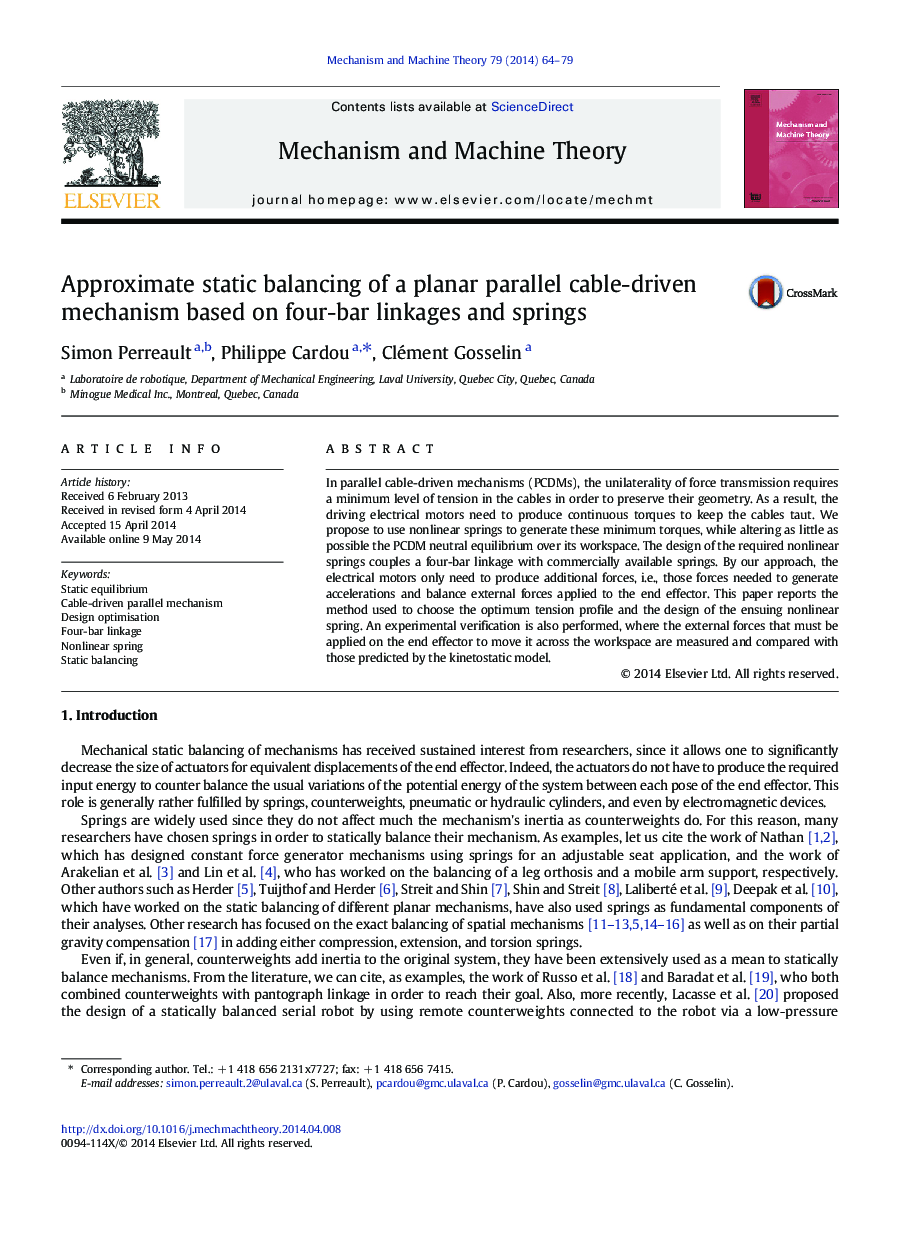| Article ID | Journal | Published Year | Pages | File Type |
|---|---|---|---|---|
| 799607 | Mechanism and Machine Theory | 2014 | 16 Pages |
•We propose a method for the approximate static balancing of cable mechanisms.•The passive balancing mechanisms maintain a minimum level of cable tension.•They decrease the continuous torque required from the motors to keep the cables taut.•The balancing mechanisms combine torsion springs with four-bar linkages.•We test our method on a simple planar parallel cable-driven mechanism.
In parallel cable-driven mechanisms (PCDMs), the unilaterality of force transmission requires a minimum level of tension in the cables in order to preserve their geometry. As a result, the driving electrical motors need to produce continuous torques to keep the cables taut. We propose to use nonlinear springs to generate these minimum torques, while altering as little as possible the PCDM neutral equilibrium over its workspace. The design of the required nonlinear springs couples a four-bar linkage with commercially available springs. By our approach, the electrical motors only need to produce additional forces, i.e., those forces needed to generate accelerations and balance external forces applied to the end effector. This paper reports the method used to choose the optimum tension profile and the design of the ensuing nonlinear spring. An experimental verification is also performed, where the external forces that must be applied on the end effector to move it across the workspace are measured and compared with those predicted by the kinetostatic model.
